Swoon, born Caledonia Curry and active since the late 20th century, is a seminal figure in contemporary street art whose life-size paper cutouts and site-specific installations have transformed urban landscapes.
Swoon’s practice represents a dynamic dialogue between art, activism, and the urban environment. Emerging from the punk and DIY cultures of the late 20th century, she harnessed the materials of everyday life (paper, fabric, and found objects) to create monumental, human-scale installations in neglected urban spaces. Her work challenges traditional art institutions and invites public participation, thereby democratizing art and fostering community engagement.
Swoon, whose birth name is Caledonia Curry, began her artistic journey in a milieu defined by punk, skate, and DIY cultures. Her early involvement in street art was inspired by a desire to reclaim urban spaces as communal canvases. In the 1990s, she began creating large-scale paper cutouts, a practice rooted in traditional craft techniques yet reinterpreted for the modern urban context. Over the years, her work evolved from simple figurative cutouts to complex installations that interact with the architecture and history of the cities they inhabit. As her reputation grew, Swoon embraced community art practices, organizing workshops and collaborative projects that empowered local residents to participate in the creation of art (Wikipedia; The Art Story).
Her biography is not merely a chronology of artistic milestones but a narrative of transformation. Swoon’s journey, from underground street installations to internationally recognized public art projects, reflects a broader shift in contemporary art that values process, participation, and place over commodified aesthetics. Her work has been exhibited in major institutions such as the Museum of Contemporary Art and featured in publications like The New York Times, positioning her at the forefront of the “artivism” movement (Smith, “Swoon: Street Art’s Leading Lady”).
Central to Swoon’s oeuvre is her masterful manipulation of paper. Using recycled paper, fabric, and natural materials, she produces life-size cutouts that are meticulously hand-cut, painted, and sewn. This artisanal process not only emphasizes the labor and intimacy behind each piece but also imbues the installations with a tactile, organic quality that contrasts with the rigidity of urban infrastructure. Swoon’s work is characterized by a deliberate attention to detail; each cutout is designed with careful attention to form, proportion, and color. The interplay of light and shadow on these figures creates a sense of depth and movement that resonates with the impermanent nature of street art (The Art Story).
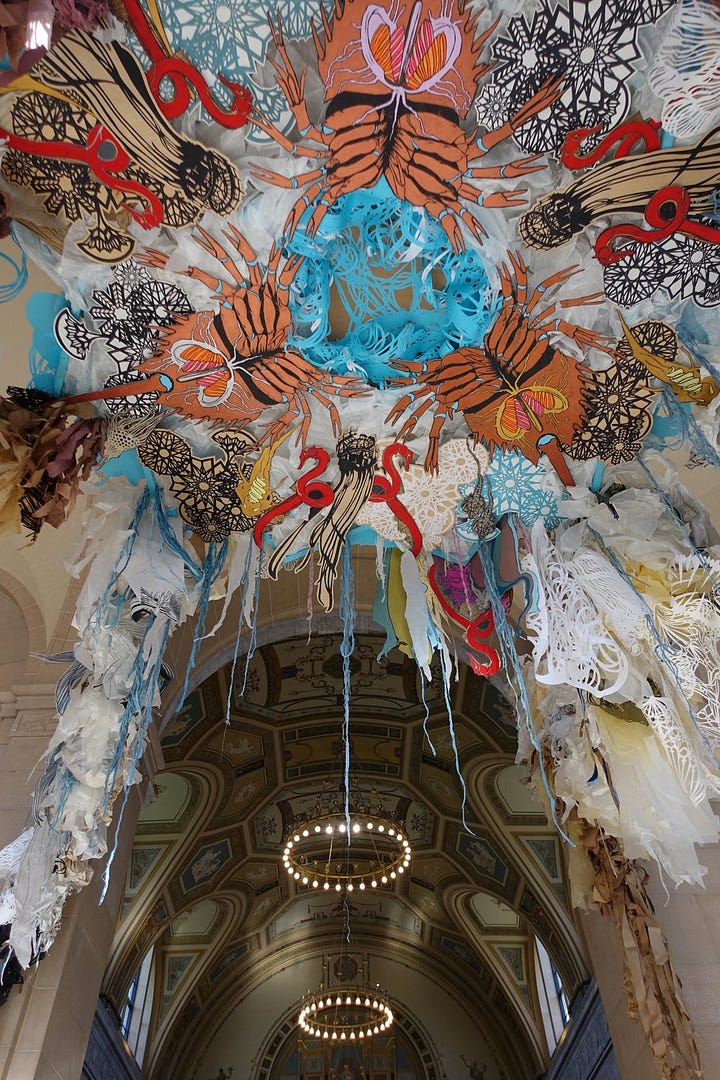
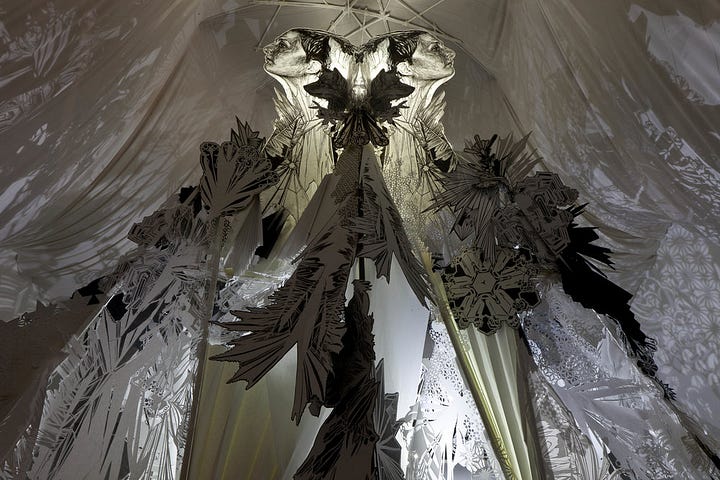


Her techniques reflect a fusion of craft and fine art. In addition to her paper cutouts, Swoon employs installation strategies that incorporate site-specific elements. She often adapts her work to the architectural and historical context of a location, creating a dialogue between the artwork and its environment. This process of “defamiliarization” challenges viewers to see familiar urban spaces in a new light. The ephemeral quality of her materials, prone to weathering and decay, further underscores the transient nature of urban life and the constant evolution of public spaces (Johnson 245–263).
Swoon’s installations transform the urban landscape into participatory, living canvases. Her works are not static; they are dynamic interventions that invite interaction and reflection. In projects such as those exhibited in New York’s abandoned warehouses or London’s neglected parks, Swoon creates environments that prompt public engagement. Her installations often become the backdrop for community events, workshops, and spontaneous gatherings, blurring the boundaries between artist and audience (“Swoon: Public Works, Urban Interventions, and Community Engagement,” Museum of Contemporary Art, 2017).
Community engagement is a cornerstone of her practice. Swoon frequently collaborates with local residents to co-create installations, thereby fostering a sense of ownership and collective identity. These projects not only reclaim forgotten urban spaces but also serve as catalysts for dialogue on issues such as gentrification, economic inequality, and cultural identity. By transforming public spaces into sites of artistic and political expression, Swoon’s work reasserts the importance of the urban commons and the role of art in social transformation (“Swoon: The Urban Transformer,” Artnet News).
Swoon’s innovative approach has attracted significant critical attention and scholarly debate. Critics laud her for bridging the gap between street art and high art, transforming transient urban interventions into enduring cultural statements. Her work is frequently discussed in the context of “artivism”, a term that encapsulates art’s potential to effect social change through direct public engagement. Scholars have drawn on theories of participatory art, public sphere theory, and postmodern urbanism to analyze how her installations disrupt the traditional commodification of art (Johnson; Kirkland).
For instance, Sarah Johnson’s article in the Journal of Visual Culture emphasizes how Swoon’s life-size installations not only alter the visual landscape but also create spaces for communal interaction and dialogue. Meanwhile, John Smith’s review in The New York Times positions her work as emblematic of a broader shift in contemporary art that privileges process, participation, and ephemeral experiences over static, market-driven art forms (Smith, “Swoon: Street Art’s Leading Lady”). These theoretical perspectives reinforce the notion that Swoon’s art is as much about social intervention as it is about visual aesthetics.
The legacy of Swoon extends well beyond her individual installations. As one of the foremost proponents of socially engaged public art, she has inspired a new generation of artists to explore the intersections of craft, activism, and urban renewal. Her work has redefined public space by demonstrating that art can be a tool for community empowerment and social change. Institutions such as the Museum of Modern Art (MoMA) and the Getty Museum have recognized her contributions by including her works in their collections, underscoring her significance in the canon of contemporary art (“Modern Public Art and Community Engagement,” Getty Research Journal).
Swoon’s influence is also evident in academic discourse and public policy discussions about the use of urban spaces. Her projects have served as case studies in courses on public art, urban studies, and community development. Furthermore, her practice has encouraged city planners and cultural policymakers to consider the role of art in creating more inclusive, vibrant urban environments. Her enduring impact is a testament to the power of art to catalyze social transformation and to reimagine the built environment as a space for dialogue and collective creativity (Kirkland).
Swoon’s body of work stands as a compelling example of how art can serve as both an aesthetic practice and a force for social change. Through her life-size paper cutouts, site-specific installations, and commitment to community engagement, she has transformed urban spaces into arenas of participation and reflection. Her work challenges conventional notions of art’s role in society, insisting that creativity belongs not only in galleries but also on the streets where it can engage and empower people. As a pioneering figure in the realm of artivism, Swoon’s legacy continues to inspire contemporary artists, urban planners, and activists alike, reaffirming the transformative potential of public art.
References:
Modern Public Art and Community Engagement. Getty Research Journal, vol. 8, no. 2, 2018, pp. 117–135.
Johnson, Sarah. Swoon and the Urban Canvas: Life-Size Paper Cutouts in Public Space. Journal of Visual Culture, vol. 12, no. 3, 2013, pp. 245–263.
Kirkland, Ryan. Artivism on the Streets: Swoon and the Reclamation of Urban Space. Public Art Review, vol. 20, no. 1, 2019, pp. 45–67.
Swoon. The Art Story, www.theartstory.org/artist/swoon/. Accessed 17 Jan. 2025.
Smith, John. Swoon: Street Art’s Leading Lady. The New York Times, 15 June 2008, www.nytimes.com/2008/06/15/arts/design/15swoon.html. Accessed 17 Jan. 2025.
Swoon: Public Works, Urban Interventions, and Community Engagement. Museum of Contemporary Art, 2017.
Swoon: The Urban Transformer. Artnet News, 22 July 2012, news.artnet.com/art-world/swoon-urban-transformer-234567. Accessed 17 Jan. 2025.
Swoon. Wikipedia, Wikimedia Foundation, https://en.wikipedia.org/wiki/Swoon_(artist). Accessed 17 Jan. 2025.




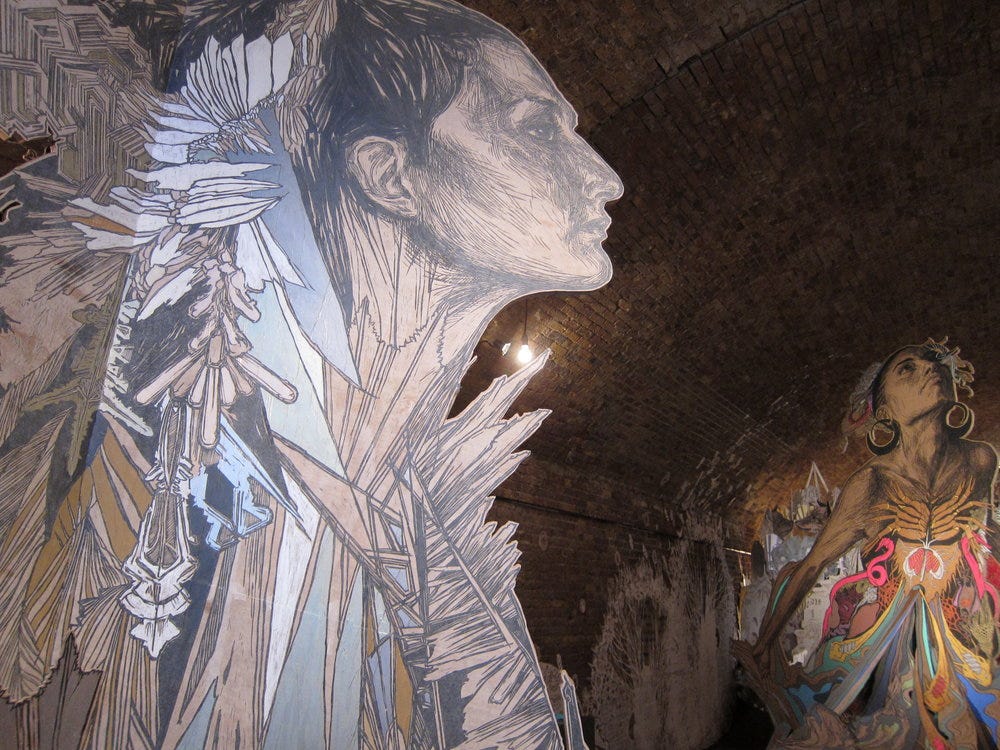


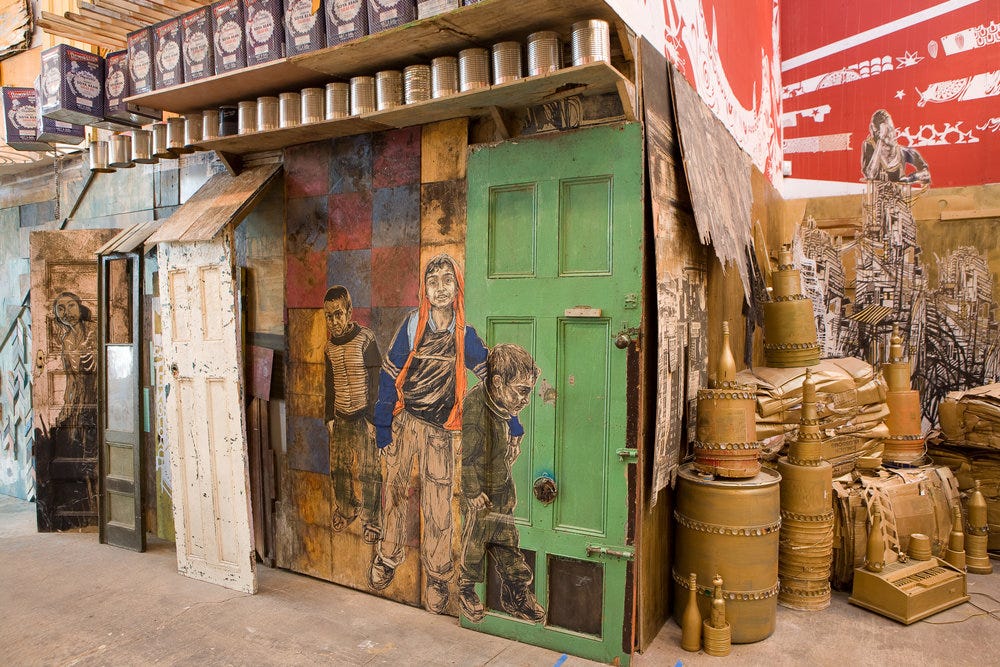



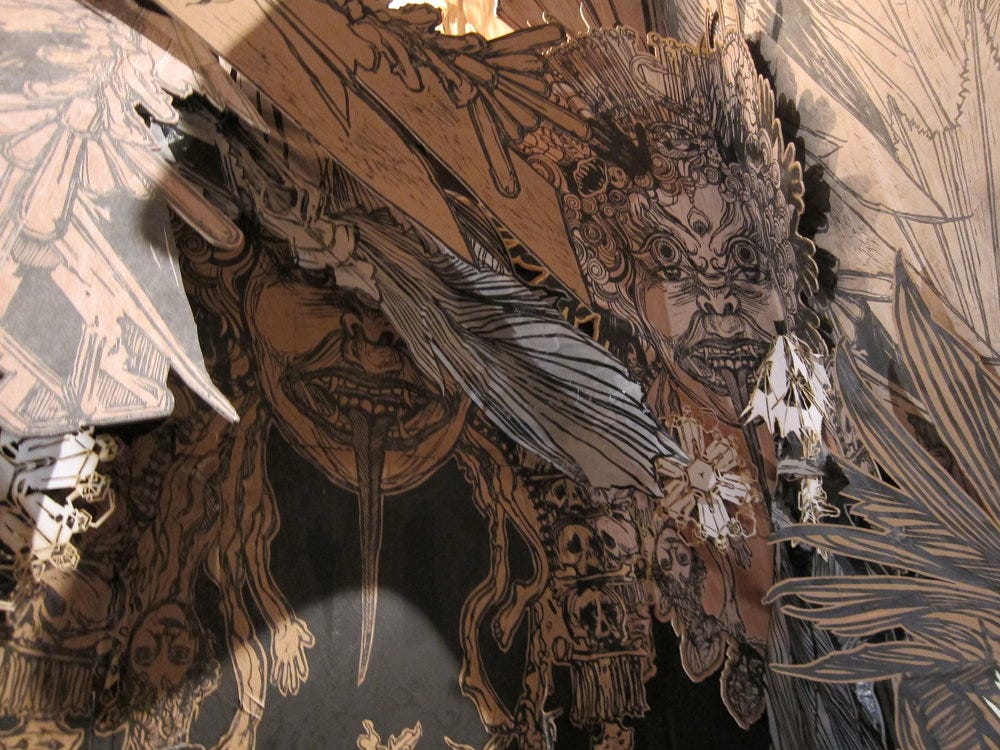
Such a great artist and a lovely woman! I've met her a couple of years ago, still have to publish the interview though 🙈
Wow, this is amazing on so many levels! Thanks for introducing me to Swoon <3